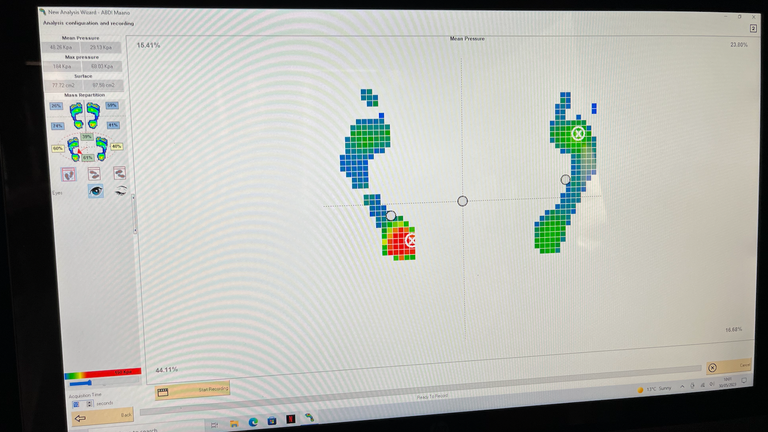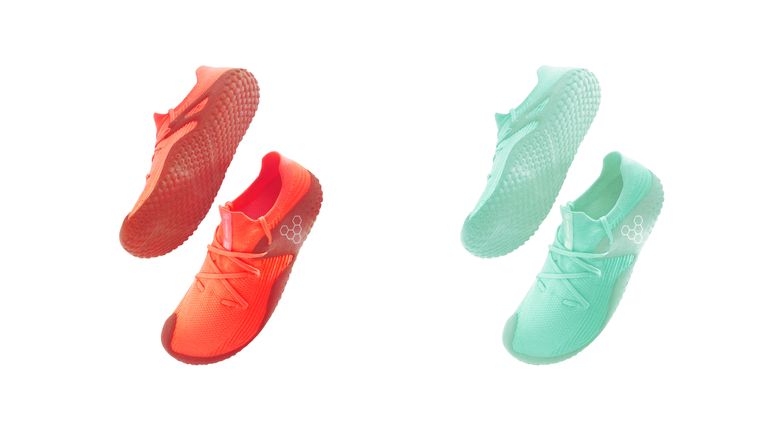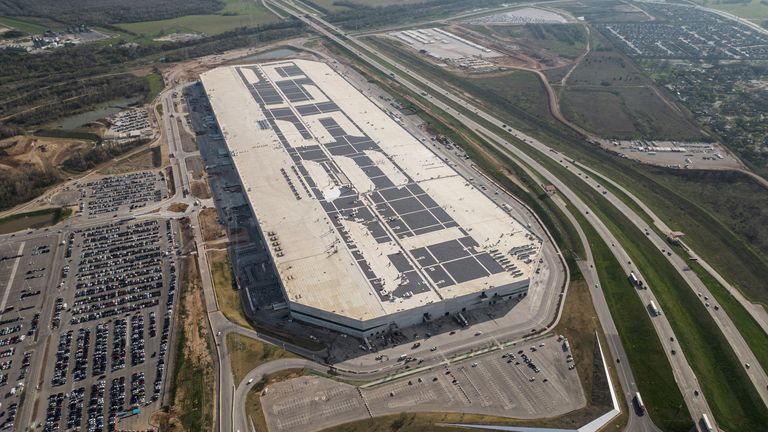Trainers are large enterprise.
Helped by celebrity collaborations, social media, and one-of-a-kind special editions that get followers queuing up outdoors shops on launch day, they’ve maybe by no means been as fascinating a vogue merchandise as they’re at this time.
I deal with myself to the odd recent pair, normally purchased on-line with a cursory look on the measurement. I simply assume they’ll match and if they do not, effectively, I can break them in – cue hobbling round with painful blisters for a number of weeks.
But that might all quickly be a distant, painful reminiscence. Asher Clark, scion of the Clarks shoe dynasty, has a grand plan for the “future of footwear” and with a view to examine it, I needed to get my ft bodily measured.
Forget the tape measure and people bizarre shoe store gadgets, Clark as an alternative had me step on what regarded like a set of futuristic scales behind his Vivobarefoot retailer in central London, geared up with a monitor that displayed the soles of my ft in actual time.
From the place I used to be putting all my weight (an excessive amount of on the heels, not sufficient on the toes), to measurements for every thing from “instep girth” to “arch height”, it was a far cry from “looks like a seven-and-a-half to me”.
Not lengthy after, this scales-like machine had remodeled a scan of my ft right into a 3D mannequin and despatched it to my telephone, able to type the idea of a bespoke pair of sneakers.
This, says Clark, is how we’ll all wish to get our new trainers in the future.
“Ten thousand years ago, humans made shoes out of local materials,” he says.
“Now, we have no choice but to do the same thing.”
Asher and brother Galahad are the seventh technology of the Clark household and, 187 years on from the daybreak of a footwear dynasty, they launched Vivobarefoot in 2012 with the aim of making sneakers that make you are feeling as near being bare-foot as attainable.
They’re virtually plimsoll-like in relation to weight and thinness. It takes time to get used to them in case you’re used to pounding the pavement in regular trainers. But the Clarks are unapologetic of their perception that they’re higher for our ft, holding them nearer to the bottom in a wider, extra pure, place.
The subsequent step is to make them higher for the planet – and that is the place my video game-looking ft are available.
Made to order
Clark says: “We are effectively using modern technology to make the shoes we did millennia ago.
“All ft are totally different, so we are able to solely accomplish that effectively by way of placing the right shoe in your ft.
“The shoe industry has a long, human-intensive chain of development. It takes a long time, it’s inefficient and slow because you’re ordering for stock. You’re making a huge bet as a business – ‘is this the right shoe, will people want it’ – well before you have them in stores.
“We’re attempting to maneuver in the direction of an environment friendly, digital mannequin that’s made particular person by particular person, domestically.”
The first step for a “Vivobiome” buyer can be to scan their ft at house with a smartphone app. It would use gaming engine Unreal to create their new sneakers in 3D, allow them to customise them and even just about attempt them on.
If they select to order, the sneakers can be made utilizing 3D printing with native, sustainable supplies. Clark says it will be lower than a month from scanning your ft to carrying the peerlessly sized sneakers.
It’s an formidable concept, first pitched to attendees on the COP26 climate summit in Glasgow, and one which seeks to disrupt an business that exhibits no signal of slowing down.
Winning over the ‘sneakerheads’
Encompassing mega manufacturers like Nike, Adidas, Converse, and Vans, the worldwide coach market was price greater than $70bn (£54bn) final yr and is projected to exceed $100bn (£78bn) by 2026.
Given the seemingly unstoppable demand, whether or not it’s to switch your outdated All Stars or seize these “limited edition” Stranger Things Vans, it ought to come as no shock that an astonishing 20 billion pairs of sneakers are made yearly – lots of them trainers.
And maybe much more astonishingly, 90% of them are destined to finish up in landfill.
Clark is unapologetic in his evaluation that the planet merely cannot take any extra of it – and his agency’s formidable Vivobiome initiative ought to be up and working in full by the center of subsequent yr.
Powering it is going to be “Tesla-like speed factories”, the place – like Elon Musk‘s electrical automobile agency – the whole shoe-making course of goes underneath one roof. The first one will likely be in Ireland in 2024, with extra to comply with in Germany and the US.
The value catch
Vivobarefoot’s aim of serving to the planet will solely go far if the sneakers are inexpensive – and you could possibly definitely choose up a couple of pairs of sneakers for the worth of what the corporate thinks it’ll cost for theirs.
“It’s expensive to do things differently,” admits Clark, who’s focusing on a £260 launch value.
In the meantime, the corporate’s launched a “pioneer programme” to place the initiative by way of its paces. People who efficiently apply will get three pairs and will likely be requested to provide suggestions.
Foot scans will start subsequent month, with the pairs rolled out between August and February.
Word of mouth will seemingly be essential as to whether Vivobiome makes a quick begin come launch, as there is no signal of a Michael Jordan ready within the wings to energy the model to glory by himself.
“A company like Nike has built an emotional legacy with amazing athletes and cool products,” says Clark.
“But I challenge that’s the past. This is looking to the next phase.”
You cannot doubt the ambition – however for now, Vivobiome’s success is up within the Air.
Content Source: news.sky.com





